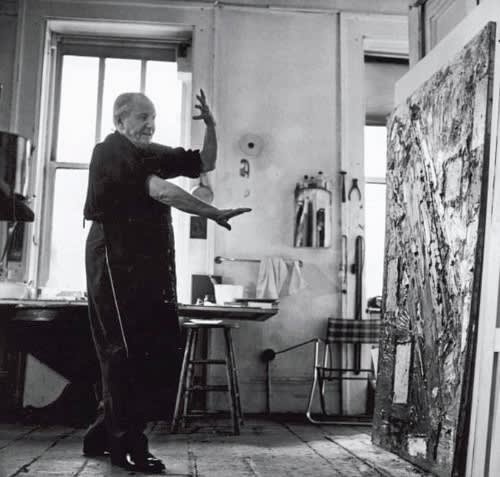"My aim in painting is to create pulsating, luminous, and open surfaces that emanate a mystic light, in accordance with my deepest insight into the experience of life and nature."
-Hans Hofmann
Career
In Paris, Hofmann exhibited his works until the onset of World War I, producing paintings most influenced by the Cubists and Cézanne. During the first decades of the century, he painted in a modernist, yet representational, style and created landscapes, still lifes and portraits. In the 1920s, he began an extended period focused solely on drawing before returning to painting in 1935. Forced to return to Germany, and excluded from military service because of a respiratory condition, Hofmann opened an art school in Munich in 1915 and developed a reputation as a forward-thinking instructor. In 1930, he was invited to teach on the west coast of the United States, which ultimately paved the way for him to permanently immigrate; in 1941, he became an American citizen.
Between 1933 and 1958, Hofmann balanced his studio work with teaching and immersed himself in (and influenced) New York's growing avant-garde art scene. Art historians believe that works such as The Wind (1942), Fantasia (1943) and Effervescence (1944) with their “painterly attacks,” jolting contrasts, rich color, and gestural spontaneity serve as “records of the artist’s intense experiences." They demonstrate Hofmann's early stylistic experimentation with techniques that would be termed “action painting,” which Pollock and others made famous by the end of the decade.
